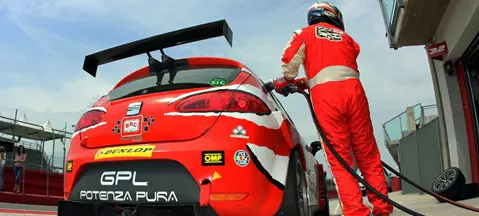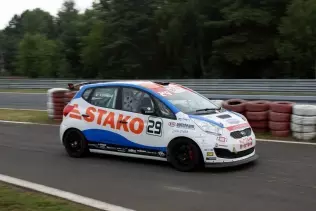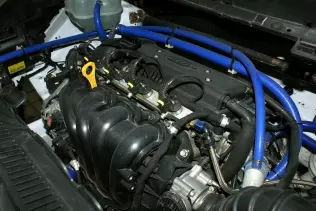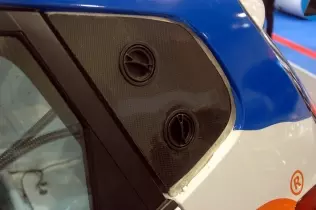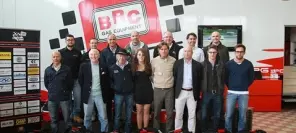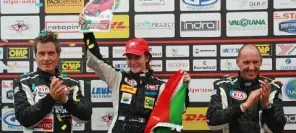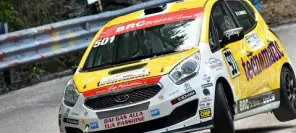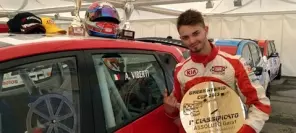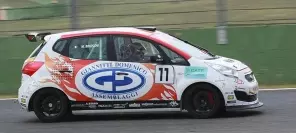- Main page
- Search
- Up to date
- Products
- Technology
- Vehicles
- Video
- Conversion Payback Simulator
Port Injection - Conversion Payback Simulator
Direct Injection - Conversion Payback Simulator
Diesel - Newsletter
Motor racing helps develop LPG industry
 loading results...
loading results...Rules
Motor racing events known as the BRC Green Hybrid Cup – organized by BRC – are a continuation of a former series, the Green Scout Cup (for LPG-only cars). The races are organized according to the rules of the Italian Automobile Sports Federation (CSAI – Commisione Sportiva Automobilistica Italiana). These rules were created in collaboration with the organizer of the Green Hybrid Cup, the aforementioned BRC. Those Italian rules, however, are not valid around the world, though they are respected by the International Automobile Federation (FIA). It recognizes LPG as a motor fuel used in sports and the LPG-powered vehicles can compete with conventionally powered cars without any restrictions.
For now, there’s no need for these rules to become applicable all over the world, but as we learned from representatives of BRC, it’s being worked upon. BRC Racing Team’s Suzuki Swift is doing well in its own class, but only in the Italian races, due to the lack of the aforementioned international rules.
However, there has been a breakthrough concerning 2013 racing events. Green Hybrid Cup races have been given an international rank by the FIA due to its single-brand character. Thanks to this, two races could be run outside Italy (in Poland and Germany). The previous formula allowed the races to take place only in Italy.
One of the most important requirements in the Italian regulations is that the autogas system must be installed by its producer, not in the car service point. Therefore, all Kia Vengas (15 cars) that compete in the Green Hybrid Cup have been adapted to run on LPG by the BRC Racing Team.
Powertrain
The vehicles have been equipped with hybrid, combustion-electric powertrains, which use LPG-only spark ignition engines. These are 1,6 l and 130 hp units. Their autogas systems are equipped with typical, commercially available components manufactured by BRC. Only the electronic controller was specially designed for a racing car and is not available for sale.
The engine is mated with a performance gearbox manufactured by Quaife (English company), and Yokohama tires are used to transfer the car’s power to the track.
Fuel and tanks
The Vengas that take part in the Green Hybrid Cup races are powered by typical, commercially available LP gas. During the competition in Poznań (Poland), the cars were refueled at a nearby Orlen gas station, one that was closest to the track. LPG is stored in light tanks integrated into the body structure. The tanks for all cars in the competition are supplied by STAKO. This ensures that the cars are provided with the sufficient amount of fuel for the whole weekend-long competition (training sessions, qualifications and two races). The tanks are fitted with two LPG filling valves mounted on the rear pillar.
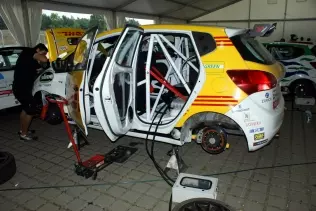 © gazeo.comKia Venga taking part in the Green Hybrid Cup race. Here in the service area at the Poznań Circuit
© gazeo.comKia Venga taking part in the Green Hybrid Cup race. Here in the service area at the Poznań CircuitGreen Hybrid Cup
This year, there was a change in the powertrain in the cars participating in the Green Hybrid Cup, and it was reflected in the current name of the event. Apart from the LPG engine, each car has two electric motors in the rear axle (with a total power of 20 PS) that support the main drive unit. The driver decides whether to use them or not in the crucial moments of the race.
The hybrid drive system used in racing Vengas was developed by BRC, though the components used in it (e.g. automotive battery) come from suppliers. The use of supplementary electric motors lifted the weight of the cars to 1135 kg. In 2012 (back when the cars were powered by LPG only), the weight was 1075 kg.
Big testing ground
The experience gained by BRC in motorsports is used by the company in its new products. An excellent example of this is the direct liquid LPG injection system (direct to combustion chambers), known as the LDI (Liquid Direct Injection).
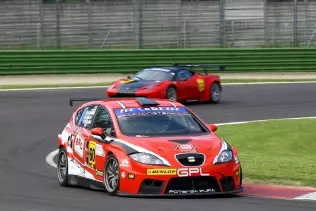 © BRCA Seat Leon was used for testing an early version of the currently available LDI system offered by BRC
© BRCA Seat Leon was used for testing an early version of the currently available LDI system offered by BRCThis system was originally used in a Seat Leon racing car, supplied – just like the Vengas – with only one type of fuel. The performance LPG system became the basis for its commercially available version.
Motorsport is also a testing ground for individual components. Let’s take the BRC injectors – they started to reveal some problems in racing conditions (high temperature, vibrations). Replacing the seals used in them eliminated the problem and now all available injectors are supplied with this type of seal.
Conclusion
BRC, as one of the world’s biggest suppliers of LP gas systems for new cars, draws its experience from motorsport, just like car manufacturers. It’s surely one of the reasons that the systems produced by the Italian company are considered to be one of the best on the market.
Zobacz stronę producenta:
BRC